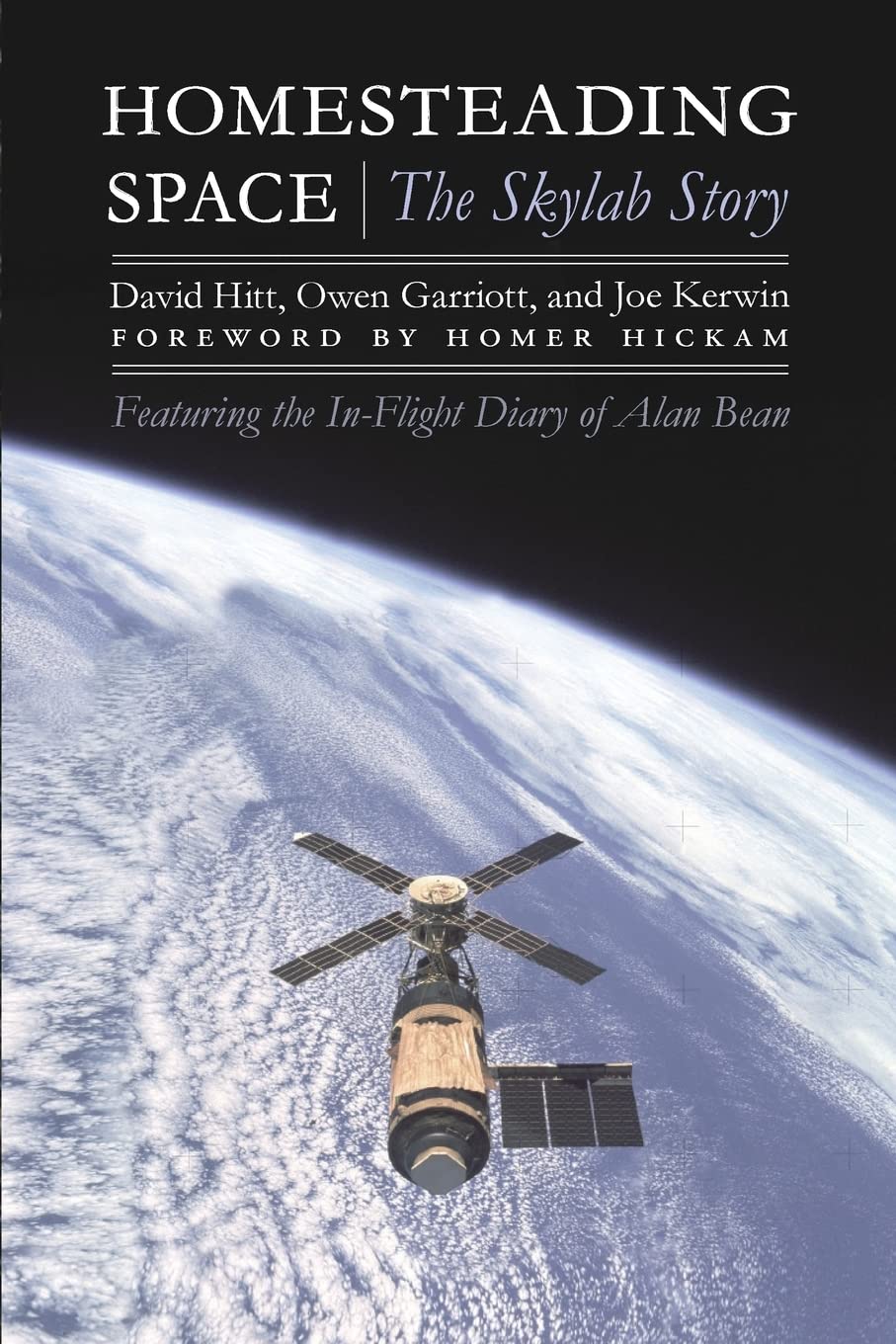 Story: Originally conceived as a major cornerstone of the more all-encompassing Apollo Applications Program that would have included a space station, a longer-term lunar presence, space science missions using existing Apollo hardware, and possibly even a crewed flight to Venus and back, Skylab ended up as a space station in which the space science missions would be carried out; the rest of AAP never happened due to government belt-tightening. The authors – most of whom were astronauts who stayed aboard Skylab in orbit – discuss the development twists and turns of the Skylab program, the three missions that were flown, and the station’s legacy to science and the American space program.
Story: Originally conceived as a major cornerstone of the more all-encompassing Apollo Applications Program that would have included a space station, a longer-term lunar presence, space science missions using existing Apollo hardware, and possibly even a crewed flight to Venus and back, Skylab ended up as a space station in which the space science missions would be carried out; the rest of AAP never happened due to government belt-tightening. The authors – most of whom were astronauts who stayed aboard Skylab in orbit – discuss the development twists and turns of the Skylab program, the three missions that were flown, and the station’s legacy to science and the American space program.
Review: It’s easy to find books on the history of the Apollo lunar missions, and fairly easy to find books covering the space shuttle program and even the international Apollo-Soyuz cooperative venture. But…Skylab? Does anyone remember Skylab for anything other than getting NASA a fine for littering when the station re-entered and scattered debris over the Australian outback in 1979?
As it turns out, someone does – mostly the astronauts who went there. With journalist David Hitt collating their memories (as well as diaries kept while in orbit by astronauts Alan Bean and Owen Garriott), and gluing it all together with excerpts from NASA’s own extensive archive of oral history interviews with those involved, Homesteading Space emerges as a straightforward, focused narrative detailing part of NASA’s crewed space program that a lot of people seem to forget happened. And yet, as the book points out, so much was still not known about lengthier stays in space by human beings. Even at the end of the lunar landing missions, the longest an American crew had stayed in orbit had been the just-under-two-week haul of Gemini 7 in 1965, which kept its two-man crew in tightly cramped quarters. The study of the effects of the space environment on the human body was an ongoing thing. The Skylab crews would be the guinea pigs.
But they also had a lot of input as to the layout of the station they’d be working in; even before then, astute mission managers had to make the decision between launching Skylab as a “wet workshop” or a “dry workshop”. Skylab was always intended to be constructed within, and onto, the upper stage of a Saturn rocket, but which rocket was of prime importance: a Saturn V could launch the station “dry” and ready to inhabit; a Saturn IB rocket would have launched the Skylab stage with a full load of fuel, necessitating the first crew performing work in spacesuits to vent any remaining fuel prior to pressurizing the station with a breathable atmosphere. The latter was deemed too complicated and risky, and a lunar landing mission was sacrificed so that its Saturn V rocket could launch Skylab “dry”.
The diaries of Skylab astronauts Bean and Garriott, both of whom were part of Skylab’s second crew, give a real everyday immediacy to the book’s attempt to paint the picture of life aboard NASA’s first space station. Every day that the station was in orbit cost money, moreso when it was occupied, and every day aboard was planned fastidiously. This had consequences for the third and final crew, the first all-rookie NASA crew since Gemini, when they found their schedules overstuffed, resulting in errors during scientific experiments and routine tasks and pushback from mission control. The result of this was a mishap that left the station and ground controllers out of contact for an entire orbit, after which both crew and controllers had to have a frank discussion about the drawbacks of their workload. Adjustments were made to the satisfaction of all involved, but not before the press had dubbed the incident in terms of a mutiny or a strike, an urban legend which both crew members and controllers rail against when interviewed in this book.
Even by the standards of the wonderful Outward Odyssey: A People’s History Of Spaceflight series of books, Homesteading Space is very information-dense, and is not a light read. A large part of the book toward the end is devoted to summarizing all three crews’ scientific experiments, achievements, and contributions to the body of knowledge for future space travelers, making it very easy to realize that the International Space Station as we know it would not have been possible without the Skylab astronauts’ first tentative steps toward living in space. Even the shuttle program, though the shuttle alone wasn’t equipped for the two-or-three-month stays that later Skylab crews endured, benefitted from their hard-won experience. This book details that experience and makes sure it’s not forgotten.
Year: November 1, 2008
Authors: David Hitt, Owen Garriott, Joe Kerwin, Alan Bean
Publisher: University of Nebraska Press
Pages: 548

No Responses